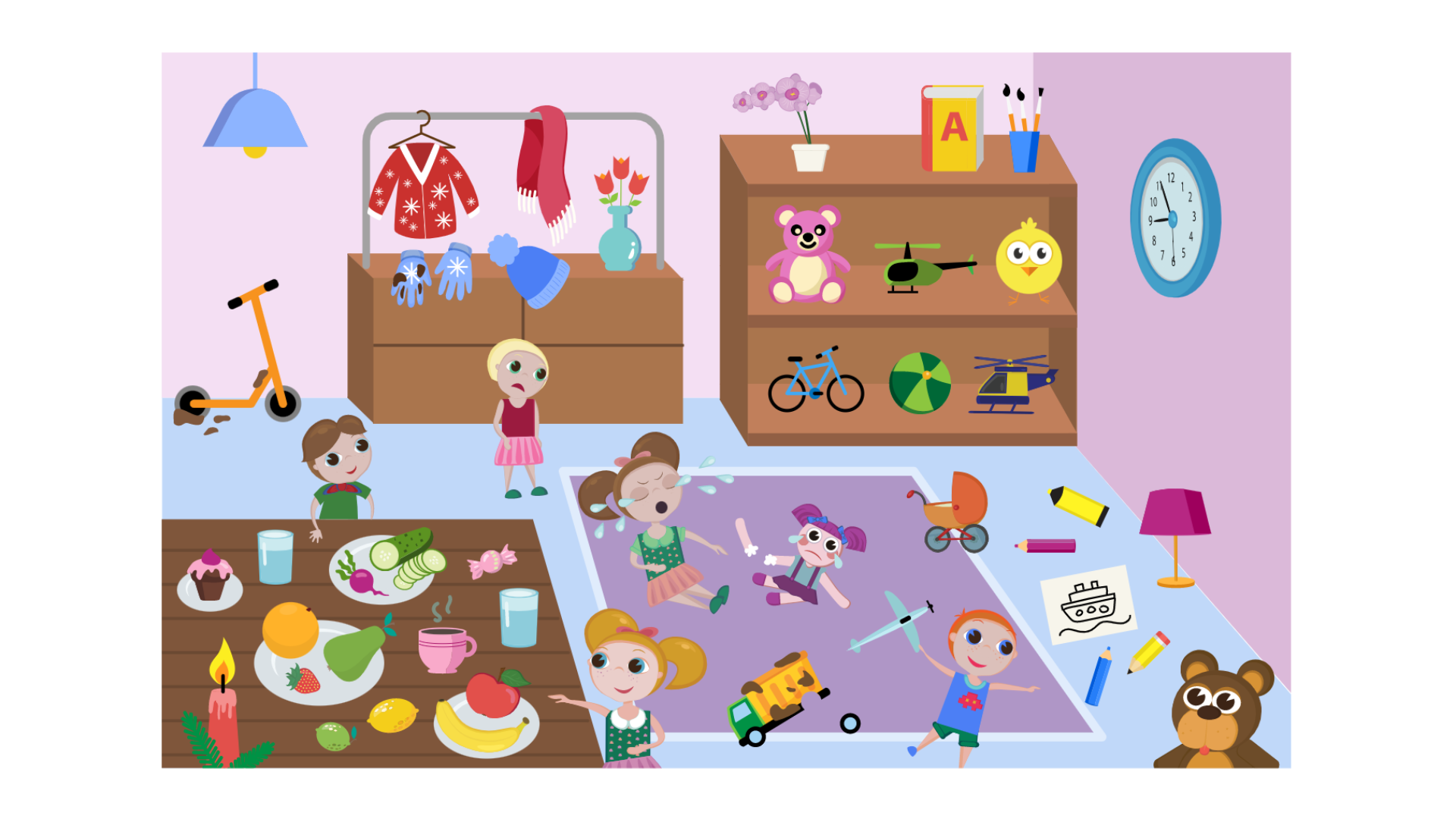Tips on how to use this exercise at home and at school.
Early maths concepts
In this exercise, the pupil tries to focus on finding objects using more difficult criteria than in Exercises 101 and 102.
Now the task is more challenging and requires understanding more complicated instructions, for which the child needs more knowledge, awareness and experience. For example, the child should know: who is the patient? Or: what does it mean to be at work? and so on.

Why is this exercise important?
The exercise focuses on sorting according to the given criteria. It is important that the criteria are clearly defined and that the objects can also be explicitly classified. The child learns to think, analyse and structure their thoughts. By sorting, the child also learns conceptual precision, which is important in mathematics.
Who is this exercise suitable for?
Mainly for preschoolers, but it is also suitable for older children who need to develop their language skills. The difficulty of the exercises depends on how well the child knows the objects being asked about and their properties. During the exercise, the child is encouraged to express and explain themself verbally, thus learning to refine concepts and their ideas about the world.
Methodological recommendations
Either read aloud the instructions to the child, play them from the app or let the child read them by themselves.
Ideally, you should talk to the child and ask the questions "Why do you think that...?", "Can anything else belong here? Like a spoon?", "If not, why?". Thanks to this way of thinking, the child develops language skills through verbal reasoning. It makes learning much deeper and more complex.
Tips for similar activities outside the app
Incorporating activities with everyday objects, where the child has to explicitly identify how the objects differ from each other, for example in purpose, fabric, material or owner, is a great match for this exercise. We use multiple characteristics comparison:
In this exercise, we try to focus on abstract criteria. An example might be an instruction where the child is looking for the fruit that their mom likes best or the animal that gives milk. So the criterion cannot be seen, for example, the purpose (warm gloves), the behaviour (the cow that gives us milk) or the owner (mummy's dress).